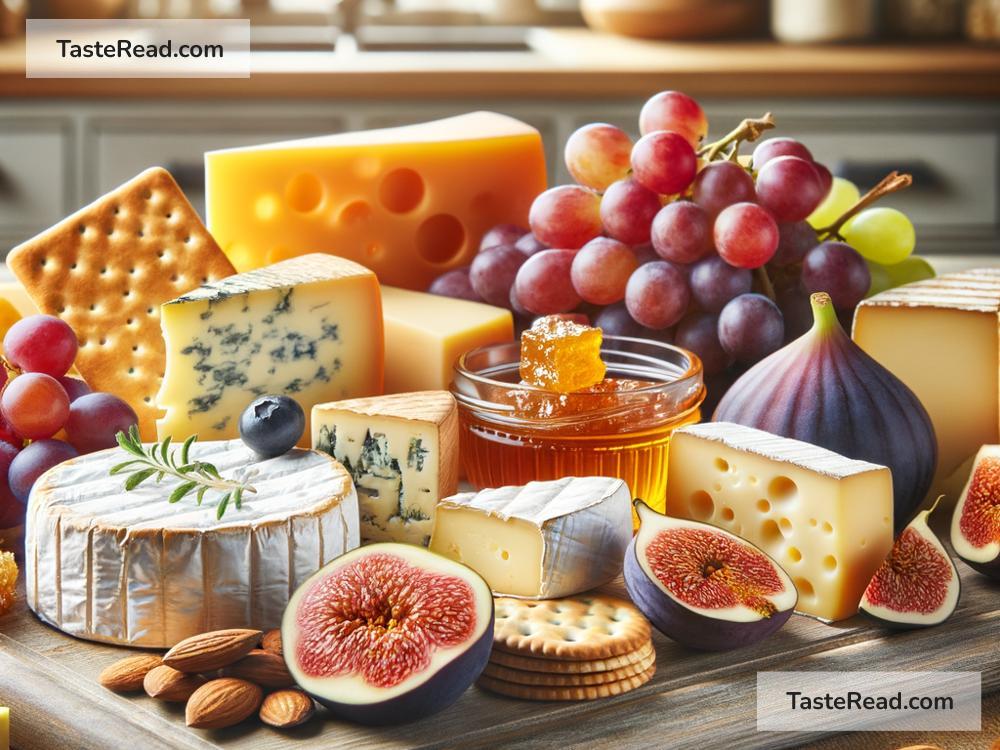How to Pair Exquisite Cheeses: A Guide for Beginners
Cheese is one of life’s simplest pleasures. Whether enjoyed on its own or paired with wine, fruit, or crackers, cheese can turn any snack or meal into something extraordinary. But with so many varieties and flavors available, knowing how to pair exquisite cheeses may feel like a daunting task. Don’t worry—we’ve got you covered! This simple guide will walk you through the basics of cheese pairing, helping you impress your guests and elevate your own taste buds.
Why Pair Cheese?
The right pairing enhances the flavors of both the cheese and what you’re eating it with. It’s all about balance—combining contrasting or complementary tastes to create a harmonious bite. For example, a bold blue cheese pairs beautifully with something sweet like honey or pears, while a soft brie complements tangy fruits or sparkling wine. Pairing exquisite cheeses isn’t about strict rules—it’s an art that blends experimentation with a dash of science.
Know Your Cheeses
Before diving into pairings, it helps to know the basic types of cheeses. Here are the main categories:
– Fresh Cheese: These are soft, mild cheeses such as mozzarella, ricotta, and feta. They’re perfect for salads and light dishes.
– Soft-Ripened Cheese: Examples include brie and camembert. These cheeses have creamy textures and rich flavors.
– Semi-Hard Cheese: Cheeses like gouda, cheddar, and havarti fall into this category. They’re firmer but still melt nicely.
– Hard Cheese: Parmesan, aged cheddar, and pecorino are cheeses with intense flavors and crumbly textures.
– Blue Cheese: Known for its tangy, bold taste, blue cheeses include gorgonzola and Roquefort.
– Washed-Rind Cheese: These pungent cheeses include Époisses and Gruyère, often with earthy or nutty flavors.
Simple Tips for Pairing Cheese
Keep these principles in mind when pairing cheese:
1. Pair Strength with Strength
Match the intensity of the cheese to the flavor of what you’re pairing it with. A strong, aged cheddar will pair well with a robust red wine, while a light goat cheese goes best with a crisp white wine or fresh fruit. Balancing the intensity prevents one flavor from overpowering the other.
2. Contrast is Key
Combining opposite flavors often creates the most exciting pairings. For example, salty cheeses like parmesan pair beautifully with sweet ingredients like honey or dried fruits. Creamy cheeses like brie work well with crunchy crackers or nuts, creating both textural and taste contrasts.
3. Look for Complementary Flavors
Think about the underlying flavors of the cheese and pair them with foods that highlight those notes. For example, the nutty flavor of Gruyère works well with almonds, while the tangy sharpness of feta enhances citrus fruits or olives.
Cheese Pairing with Foods
Cheese can be paired with a variety of foods to create memorable combinations. Here are some ideas:
- Fruit: Fresh fruits like apples, pears, or grapes work well with many cheeses. Soft cheeses like brie pair wonderfully with berries, while crumbly goat cheese complements citrus fruits. For a more decadent pairing, try dried apricots or figs with hard-aged cheeses.
- Nuts: Almonds, walnuts, and pistachios make excellent accompaniments to cheese platters. Their earthy, crunchy texture adds depth to creamy or sharp cheeses.
- Honey or Jam: A drizzle of honey or a dollop of fig jam can transform a cheese tasting experience. Sweet spreads pair especially well with salty blue cheese or aged parmesan.
- Bread and Crackers: Mild bread like ciabatta or baguette complements most cheeses without overpowering their flavors. For harder cheeses, opt for crisp crackers that allow the cheese to shine.
- Cured Meats: Prosciutto, salami, and other cured meats balance cheese with their savory, salty flavors. A slice of meat paired with soft-ripened cheese creates a delightful bite.
Cheese Pairing with Drinks
Pairing cheese with the right drink can elevate its flavors. Here are some popular combinations:
- Wine: Wine and cheese are a classic duo, but pair wisely! Red wine goes best with stronger, aged cheeses like gouda or cheddar, while white wines complement lighter cheeses like goat cheese or brie. Sparkling wine is perfect for bloomy cheeses like camembert.
- Beer: Beer offers an exciting alternative to wine. A malty beer pairs well with nutty cheeses like Gruyère, while a sour beer contrasts beautifully with creamy cheeses.
- Tea: Tea is an underrated partner for cheese. Try pairing green tea with fresh cheeses like mozzarella, or black tea with semi-hard cheeses like havarti.
- Cocktails: Whiskey pairs well with aged cheddar, while cocktails with citrus notes (like a margarita) work nicely with tangy cheeses like feta.
Build a Cheese Board
If you’re hosting a gathering, a cheese board is the perfect way to showcase your pairings. Include a mix of cheeses—soft, hard, and crumbly—for variety. Add fruits, nuts, crackers, and spreads for balance. Don’t forget labels so your guests know which cheese they’re enjoying.
Experiment and Have Fun
Pairing exquisite cheeses doesn’t have to be complicated. Experiment with different combinations until you find your favorites. Try a new cheese every now and then, and don’t be afraid to take risks. After all, discovering a new flavor pairing is one of the joys of eating cheese.
In the end, the best cheese pairings are the ones that make you smile. So grab some cheese, assemble a few sides, and enjoy exploring this delicious world of flavor. Whether you’re a casual snacker or an aspiring cheese connoisseur, pairing cheeses is a fun and rewarding culinary adventure. Enjoy!


